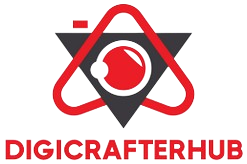In the ever-evolving landscape of data storage technology, Solid-State Drives (SSDs) have emerged as the front-runners, providing unmatched speed, reliability, and efficiency. But as technology progresses, new enhancements are constantly being added to further optimize performance. One such innovation is Host Memory Buffer (HMB) technology. This article delves into the myriad benefits that SSDs with HMB technology offer, making them an excellent choice for both casual users and industry experts alike.
What is Host Memory Buffer Technology?
HMB technology allows an SSD to utilize the host system’s DRAM, bypassing some of the constraints imposed by its own limited DRAM or even lack thereof. Normally, SSDs come with built-in DRAM to serve as a cache for mapping tables that track the locations of data on the SSD. However, including DRAM can increase the cost and power consumption. HMB offers a cost-effective alternative by leveraging the host system’s memory.
How Does It Work?
HMB-enabled SSDs communicate with the host system to allocate a portion of the host’s DRAM for storing mapping tables and other metadata. This mechanism effectively reduces latency and increases read/write speeds, making the operations much quicker and more efficient.
| Traditional SSD | HMB-enabled SSD |
|---|---|
| Relies on built-in DRAM | Utilizes host system’s DRAM |
| Higher costs | Cost-effective |
| Higher power consumption | Low power consumption |
| Limited by SSD’s DRAM size | Flexible, can allocate more DRAM |
Benefits of SSDs with Host Memory Buffer Technology
Now that we understand what HMB is and how it works, let’s explore the benefits it offers:
1. Enhanced Performance
One of the most significant advantages of HMB technology is the enhanced performance. By using the host system’s DRAM, HMB-enabled SSDs can access larger cache sizes, thereby improving data access speeds. This results in faster read and write operations compared to traditional SSDs.
2. Cost Efficiency
Integrating HMB technology allows manufacturers to design SSDs without built-in DRAM or with minimal DRAM, significantly lowering production costs. These savings are passed on to the consumer, making high-performance SSDs more affordable.
3. Reduced Power Consumption
DRAM consumes a substantial amount of power, especially in high-capacity SSDs. By leveraging the host system’s DRAM, SSDs with HMB technology use less power, contributing to overall energy efficiency. This is particularly beneficial for portable devices like laptops, where battery life is crucial.
4. Flexibility and Scalability
HMB technology offers flexibility and scalability, as it allows the SSD to allocate more host memory as needed. This adaptability ensures that the SSD performs optimally under various workloads and conditions.
5. Improved Reliability and Longevity
Reduced wear and tear is another advantage, as SSDs with HMB technology perform fewer write and erase cycles compared to traditional SSDs. This reduction in cycles enhances the overall reliability and longevity of the drive.
Use Cases for HMB-enabled SSDs
SSDs with HMB technology are versatile and find applications across various domains:
1. Consumer Electronics
In consumer electronics, particularly in laptops and desktops, HMB-enabled SSDs offer a blend of performance and cost-efficiency, making them an excellent choice for everyday computing needs.
2. Gaming
For gamers, HMB-enabled SSDs provide quick load times and seamless performance, enhancing the gaming experience without breaking the bank.
3. Enterprise Solutions
In enterprise environments, the improved efficiency and reliability of HMB-enabled SSDs make them ideal for data centers and servers, where performance and uptime are critical.
Challenges and Considerations
While HMB technology provides numerous benefits, it is not without challenges:
1. Dependency on Host System’s DRAM
One potential drawback is the dependency on the host system’s DRAM. If the host system lacks sufficient memory, the advantages of HMB could be diminished.
2. Compatibility Issues
Compatibility can also be a concern. Not all systems support HMB technology, which could limit its deployment in certain environments.
3. Security Concerns
Leveraging the host system’s memory introduces potential security challenges, as sensitive data might need additional safeguards to prevent unauthorized access.
Conclusion
Host Memory Buffer (HMB) technology brings a new wave of efficiency, performance, and cost-effectiveness to SSDs. By leveraging the host system’s DRAM, HMB-enabled SSDs overcome many of the limitations of traditional SSDs, providing a versatile solution for a variety of applications. While there are challenges to consider, the benefits often outweigh the drawbacks, making HMB technology a valuable advancement in the realm of data storage.
